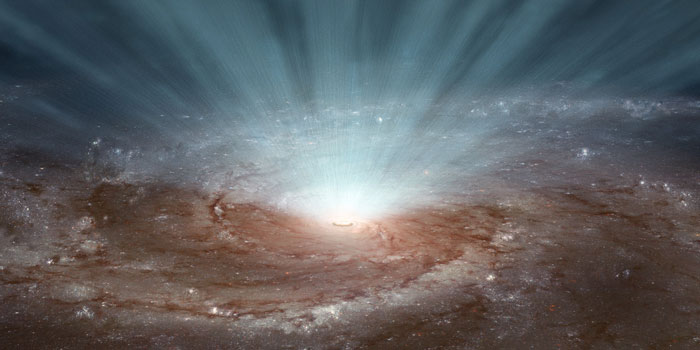04 MAR 15
By Bjørn Lymann Jespersen
An X-ray telescope has, for the first time, observed powerful energy-rich winds emitted from black holes, providing new knowledge about the relationship between black holes and the formation of new stars in galaxies.
One of the universe’s biggest mysteries—black holes—has now become slightly less mystical. New research published in the journal Science and written by among others, Finn Erland Christensen from DTU Space describes the activity around a so-called quasar (a large black hole with an illuminated ring of gas around it)—activity which until now has only been a theory.
We are talking about so-called galactic winds, which are emitted by the black holes. Galactic winds are the radiation that is emitted by black holes when surrounding mass is sucked into the hole. This radiation consists of X-rays with a wavelength of less than 0.1 nanometer—so-called hard X-rays—which so far have been undetectable using standard X-ray telescopes. But with the help of NASA’s NuSTAR satellite and ESA’s XMM-Newton telescopes, observations have now become possible.
“We already knew that black holes emit galactic winds. What’s new about the NuSTAR/XMM observation is that we have been able to model where the winds emanate from in the area around the black hole. In this way, the spatial distribution and structure provide us with a solid basis for studying galactic winds in other galactic cores in the future,” says Finn Erland Christensen.
The NuSTAR satellite’s telescopes can observe galactic winds because they are sensitive to hard X-rays. However, this is entirely due to DTU researchers, who have developed the X-ray reflective surface of the telescopes’ lenses.
Black holes stop stars
The discovery means that the researchers can now demonstrate a correlation between black holes in galaxies and the formation of new stars. When galactic winds are emitted, they force gas and dust from the galaxy. The gas and dust are necessary for the formation of new stars, and when galactic winds send this material away, fewer stars are created. The researchers were aware that star formation was smaller in galaxies with black holes, but the NuSTAR satellite telescopes have now established a definite correlation.
In addition to observing the galactic winds, the researchers have also been able to measure the winds’ speed and see that they are not blown out in a narrow-beam, but in a multidirectional semi-circle. Armed with this information, the researchers can prove that the winds are powerful enough to prevent star formation.













